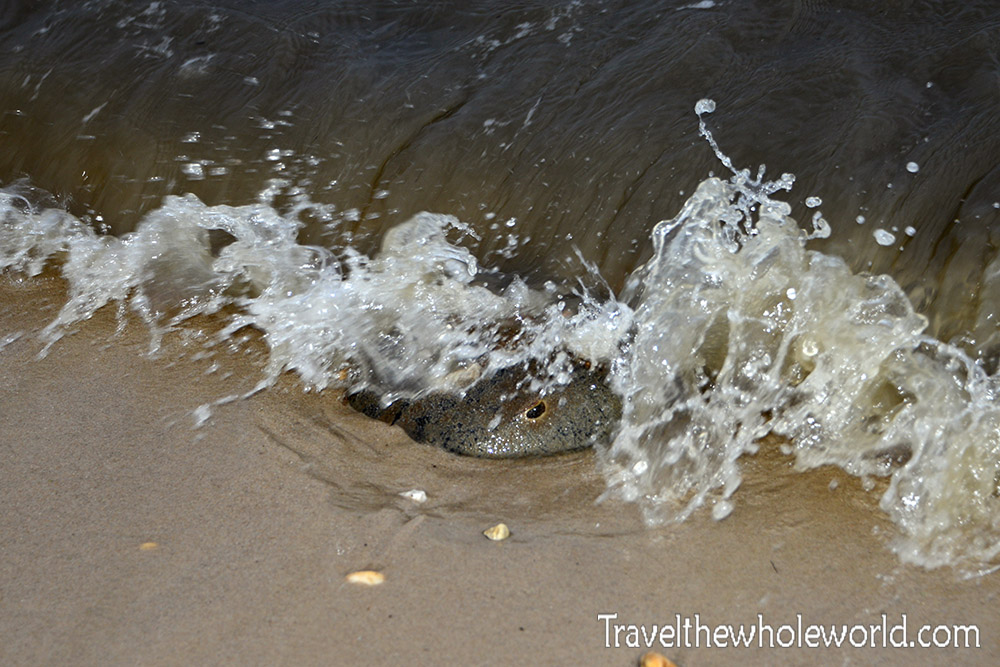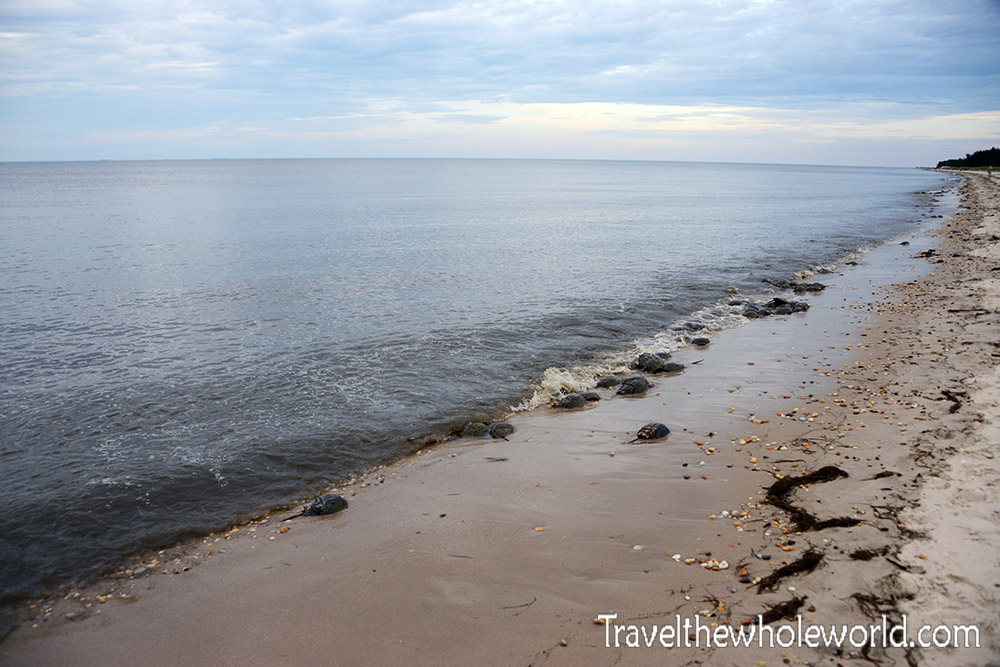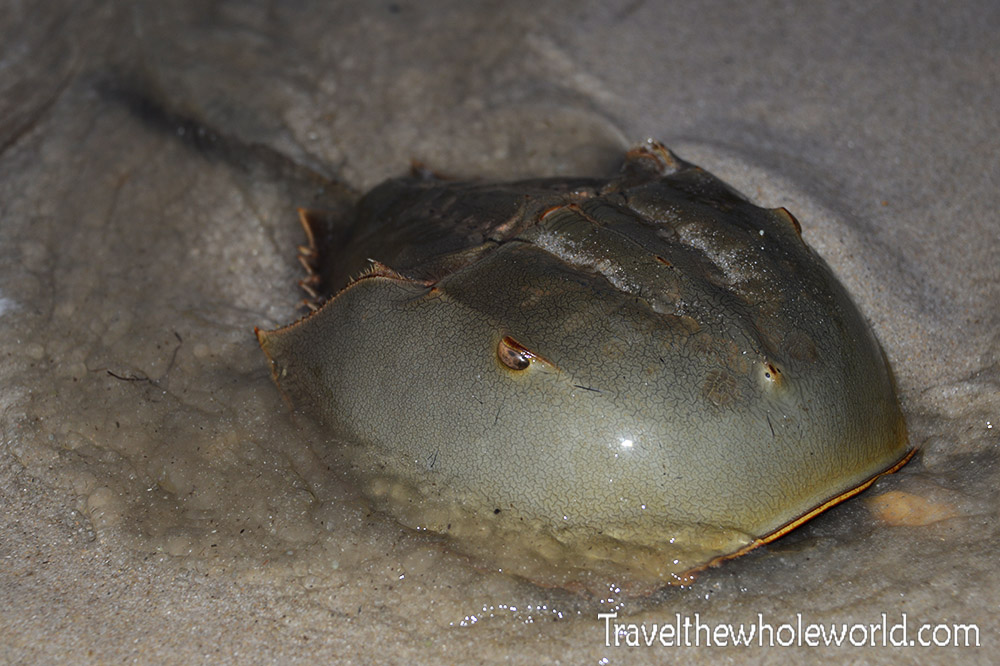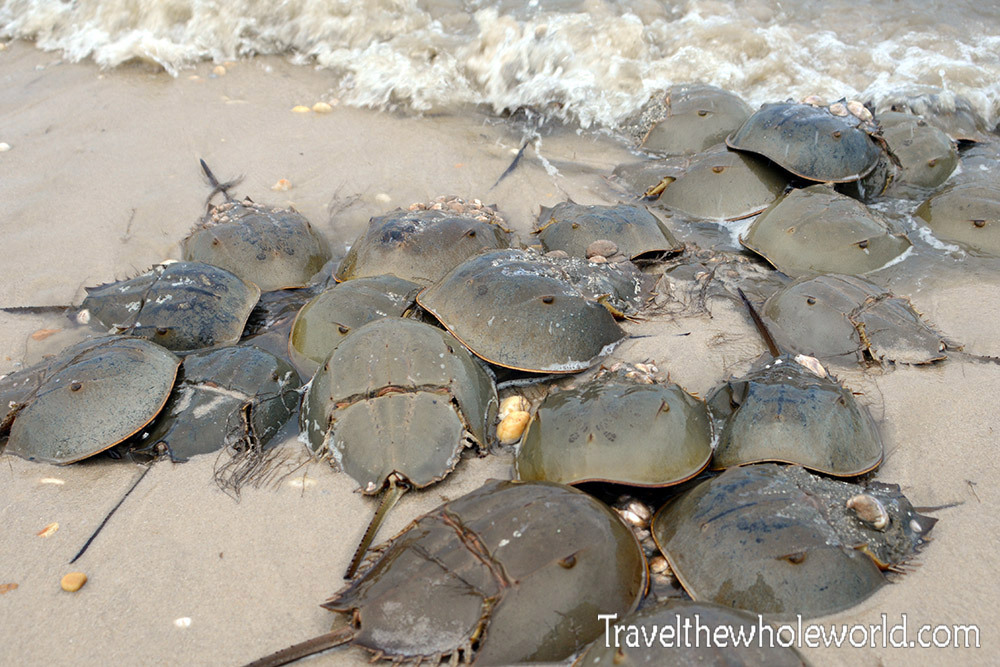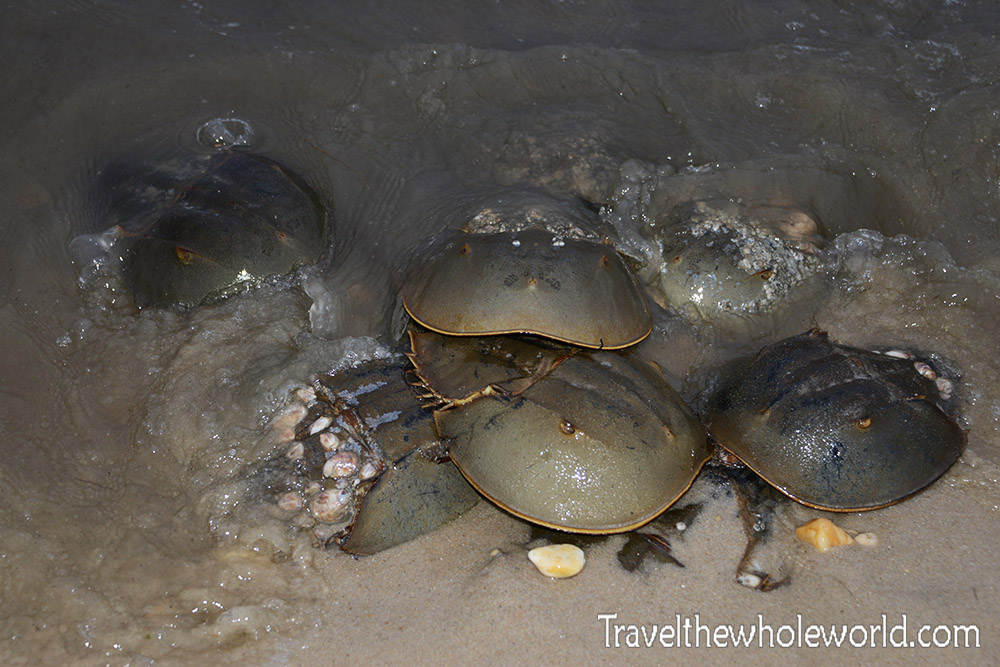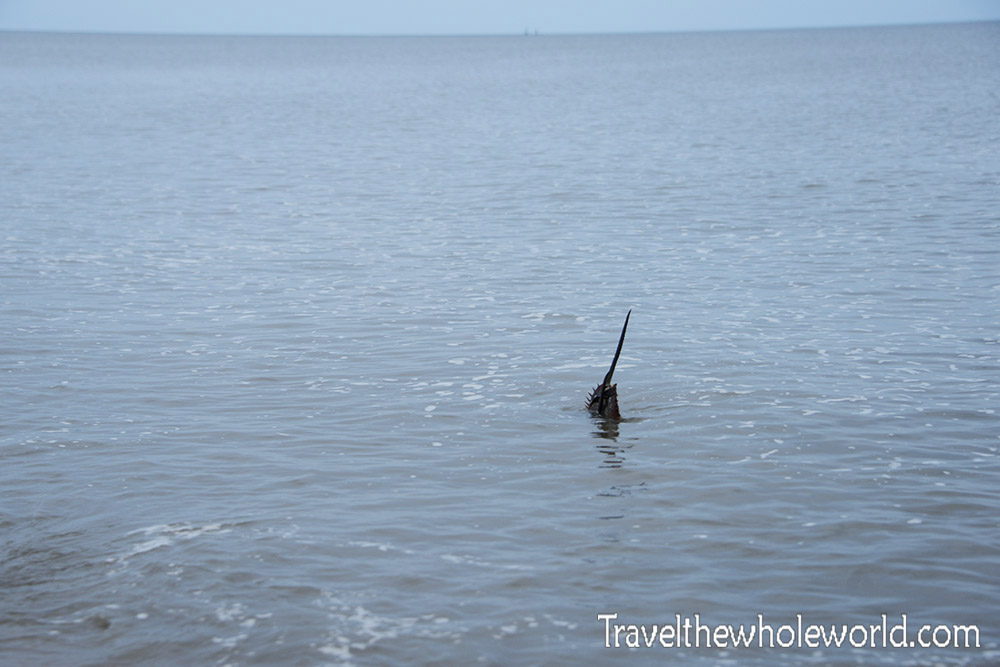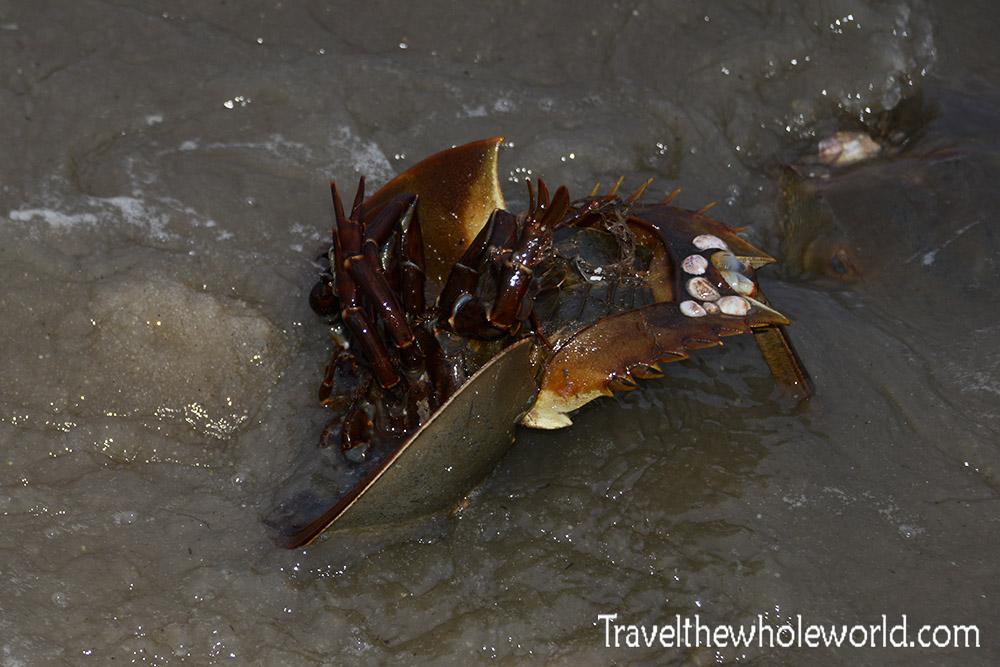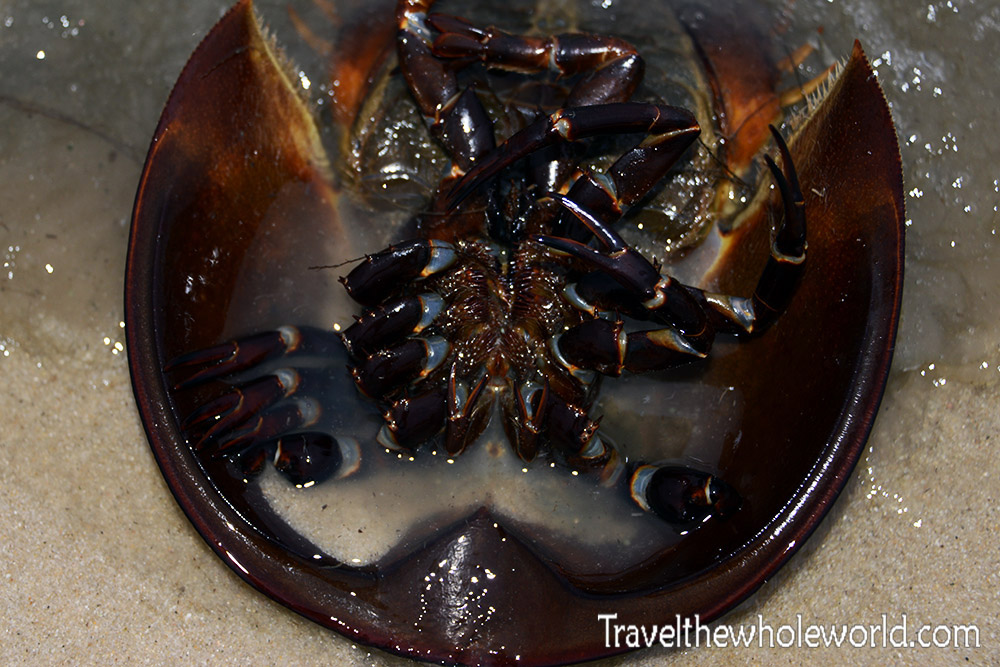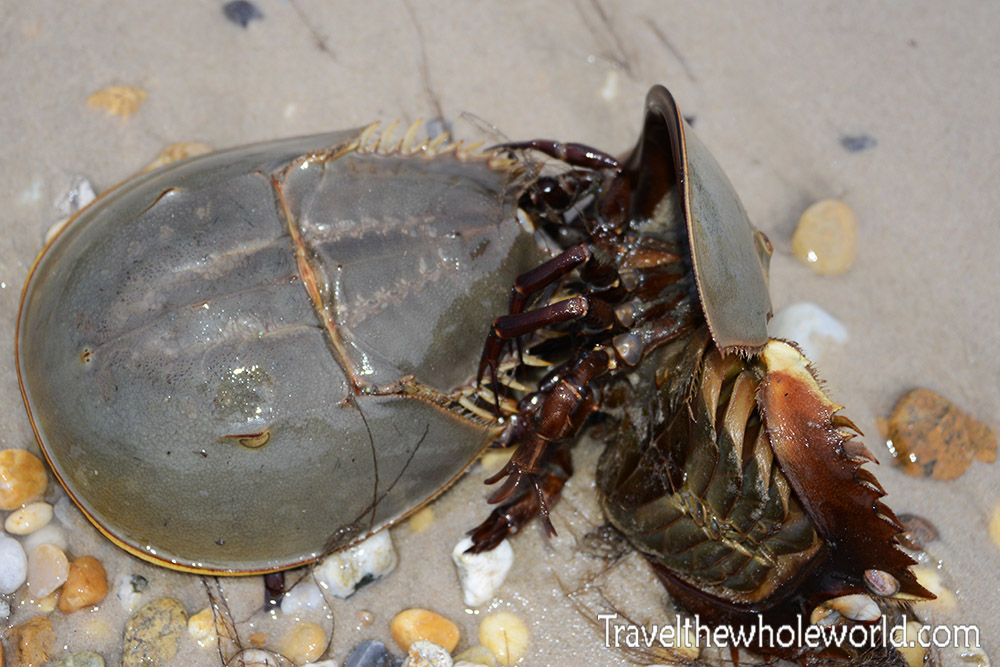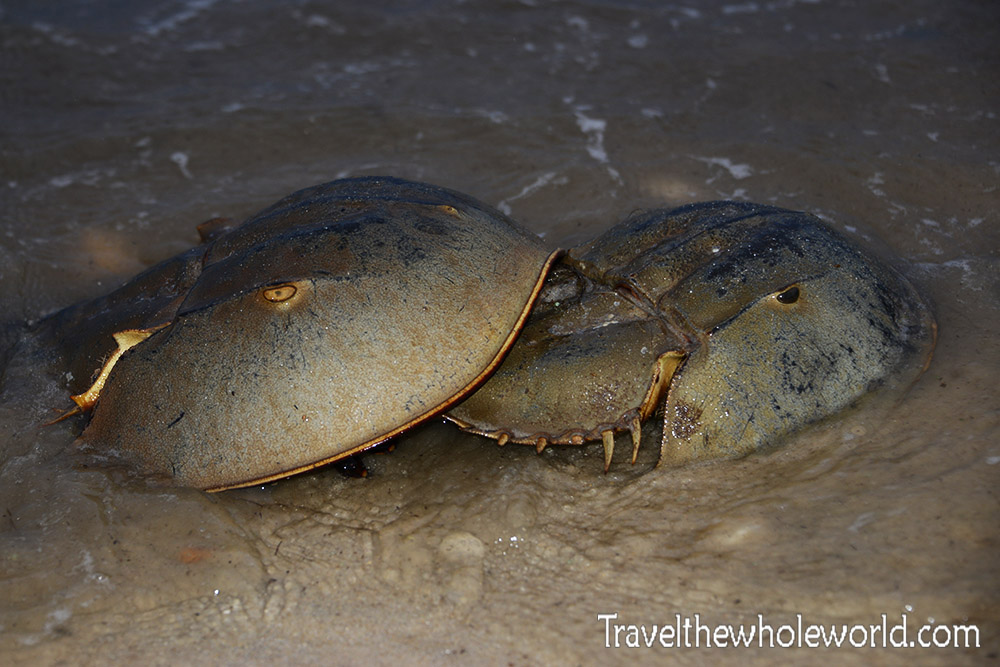Horseshoe Crab Migration
At the end of each spring, some of the strangest creatures in the world wash up in the Delaware Bay. The horseshoe crab migration is something I heard about only a few years ago, despite it occurring only a few hours from my hometown. Although an occasional horseshoe crab can be found all over the east coast as well as separate species in Asia, the migration is unique in that it brings millions of these ashore each year. In the photo above, you can see one of the first horseshoe crabs I spotted coming out of the ocean.
Being that this was my first time ever trying to watch the annual migration, I didn’t really know what I was doing. The only thing I knew for sure was that the time to visit was in the evening during a full moon in mid-May to early June. We visited a few days before a full moon at the very end of May; perfect! My friend and I first showed up to a placed called Prime Hook beach around 5pm. We were disappointed to not see a single horseshoe crab except for a dead one. Maybe the event had passed already, or maybe we were just completely in the wrong area? We decided to go to dinner and do some final research before heading home. As it turns out, the evening basically means when the sun is going down, so 5pm had been to early. We went to Slaughter Beach which was just a few miles away from Prime Hook, and immediately saw a few horseshoe crabs along the shore. The photo above shows Slaughter beach, with a close up of a horseshoe crab below.
As it got darker, more and more of these guys began arriving. Above and below are some photos of two pods I saw of these horseshoe crabs along the beach. I actually dislike using the word crabs to describe these guys, since they aren’t crabs at all. I later found out that they aren’t not even in the crustacean family, but more related to spiders. These guys are truly some unique animals! Like spiders they have have a several pairs of eyes and ten legs. What makes them even more unique is that they have the ability to regrow lost limbs, have blue blood that is worth some $60,000 a gallon in the medical field, and have evolved little since their first appearances around 450 million years ago.
Once these guys began to crowd the beaches, they found themselves stack up on top of each other and occasionally getting rolled over by the waves. You’d also see a tail randomly sticking out of the water here and there like in the photo above. From what I understand, they only reason they have tails is to upright themselves when knocked over by a wave, like this guy below is doing.
Every few minutes I’d see one of the horseshoe crabs completely upside down, and it’s not really the most attractive sight! You can tell from this photo above that these guys don’t really have faces. Their eyes are located on their exoskeleton, and their hearts and brains from what I understand are located nearly in the same place in the center of their body. If you can see the bluish color along their legs, this is almost the same exact color of their blood. I mentioned their blood costs nearly $60,000 a year due to its value in the medical community. These primitive creatures have a unique way of fighting diseases, and their blood responds so well to any virus or bacteria, that is has become essential in testing all medicine.
The guy I photographed upside down wasn’t too skilled with using his tail to upright himself. I thought about doing it for him but he grabbed on to one of his friends passing by and was able to get up. In this photo you can see their breathing gills located towards the end of their tails.
Lastly, here’s a photo of the crabs actually mating, which is the purpose of the entire migration. These guys mate in a different way than most animals. What happens is the female lays the eggs in the sand, and the males fertilize them afterwards. This is a bit different than most mating since the female doesn’t actually choose her mate, and the eggs that are fertilized are kind of on a first come basis. Since these guys have been doing this for over 450 million years, it means they were arriving on shores to mate before North America even existed. To put things in perspective, these guys were believed to exist before there was any significant land based wildlife on earth!
